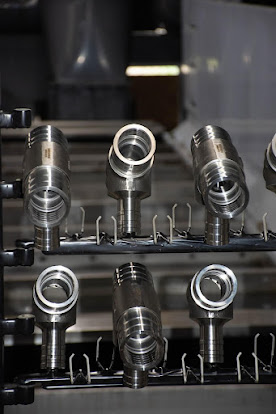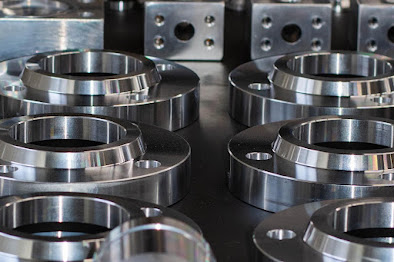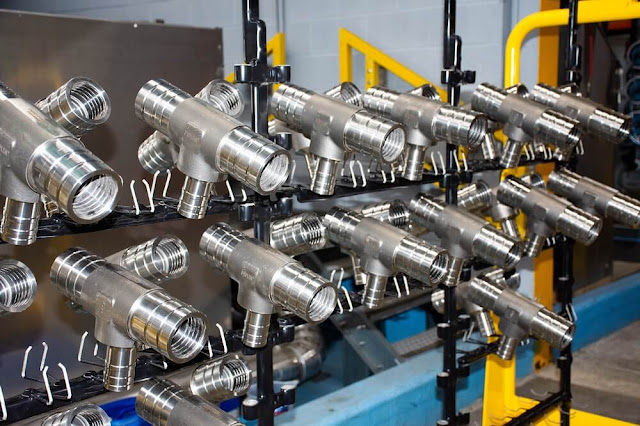6 Types of Metal Finishing Techniques that Reduce Surface Roughness and Corrosion Impact
Summary:
Metal finishing is a final and crucial step
of manufacturing that brings aesthetics, corrosion protection and reduces
surface roughness. There are numerous types of metal finishes for diverse
applications and you should know how it works to choose the right treatment for
your metal components.
Body:
Metal components are used everywhere for
centuries and to make the best out of them, they need to be finished, polished,
and processed properly. It undergoes various methods to improve the surface of
a product, chemical, and electrical resistance and durability. Understanding
which finishing method to use can help increase the longevity and quality of
products.
Finishing for different metal components is
necessary to achieve the desired appearance and surface texture. Using the
right treatment can ensure optimal protection from corrosion and tarnishing and
enhance thickness, strength, and durability. It is best to avail
professional metal finishing services to strengthen the
substrate and increase the wear resistance of your metal components.
Let’s see how metal finishing works and
different types used to make a significant effect on surfaces and substrates.
Why Metal Finishing is Important?
Apart from aesthetics, metal finishing is
extremely crucial to reduce the wear and tear of metal products. It can help
improve electrical conductivity, solderability of components, and resistance to
torque. The cleaning and polishing process removes abrasions on the metal
surface and minimizes corrosion, thanks to its incredibly smooth surface. Metal
finishes enhance metal surfaces in the following ways:
- Improve durability
- Improve corrosion resistance
- Electrical resistance
- Abrasion resistance
- Minimize friction
- Create a conductive
surface
- Visual appeal
Different Types of Metal Finishes
Electroplating
The electroplating method passes the electric current through an electrolyte, which results in metal atoms creating an electrode. For instance, zinc plating can help prevent corrosion and gold plating offers a decorative appeal. Rack plating and barrel plating are common and popular electroplating methods.
Electrocoating
Electrocoating follows the same fundamentals as electroplating, however, it carries electrically charged paint particles that build a primer over a substrate. It helps with adhesion when a product is required to be painted.
Passivation
Passivation is a chemical procedure wherein
parts are submerged in nitric or citric acid to remove corrosion substances. It
limits the amount of iron that responds to the environment causing rust and
creates a protective shield without transforming the physical appearance of the
product. It is easy to implement in several materials like silicone, stainless
steel, aluminum, and nickel.
Powder coating is an effective powder-based alternative to a liquid form that ensures greater thickness, desired protection, and aesthetic appeal. It combines various pigments, curatives, flow modifiers, and other additives, resulting in a chemical reaction that forms the coating and substrate.
Buff Polishing
Buff polishing is a great alternative to electropolishing that doesn’t undergo an electrochemical process. It brings a smooth and shiny finish, best suited for metal components that require a top-quality appearance.
Metal Grinding
It is a process wherein a component is
reduced by grinding away metal ions. It involves a machine that utilises
abrasion and friction to smoothen the metal surface. It is ideal for hard
materials such as hardened steel that needs shallow cuts.
Conclusion:
Choosing the right metal finishing technique
is essential to attain numerous benefits like corrosion protection, rust
resistance, and durability. Narrow down a few choices to make a wise decision
that includes production speed, metal hardness, and cost-effectiveness. The
resulting appearance of a final part and its feasibility for different
applications can be vital determining factors.
About the Author:
A leading supplier of high-quality and long-lasting
metal finishing with quick turnaround times, offering a wide range of solutions
for metal components such as plating carbon steel parts, stainless steel
passivation, black oxide coating, zinc-nickel plating, sandblasting, and shot
peening.





Comments
Post a Comment